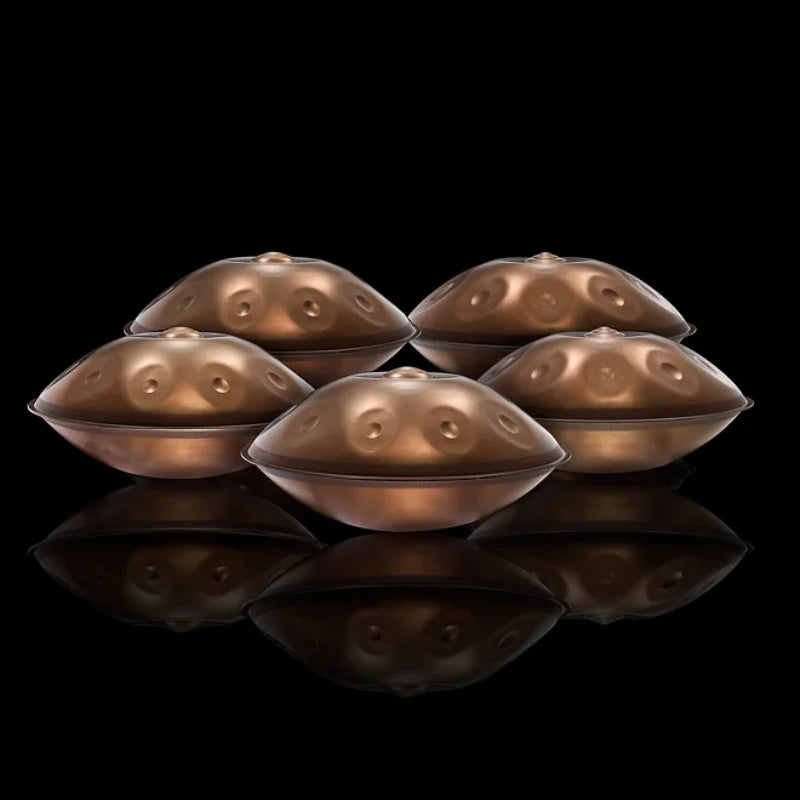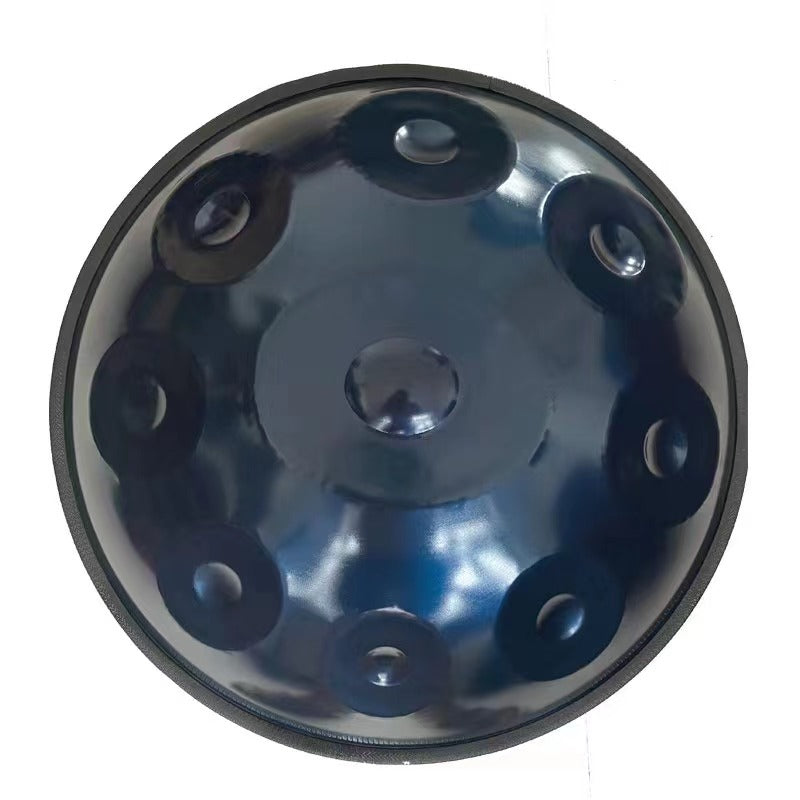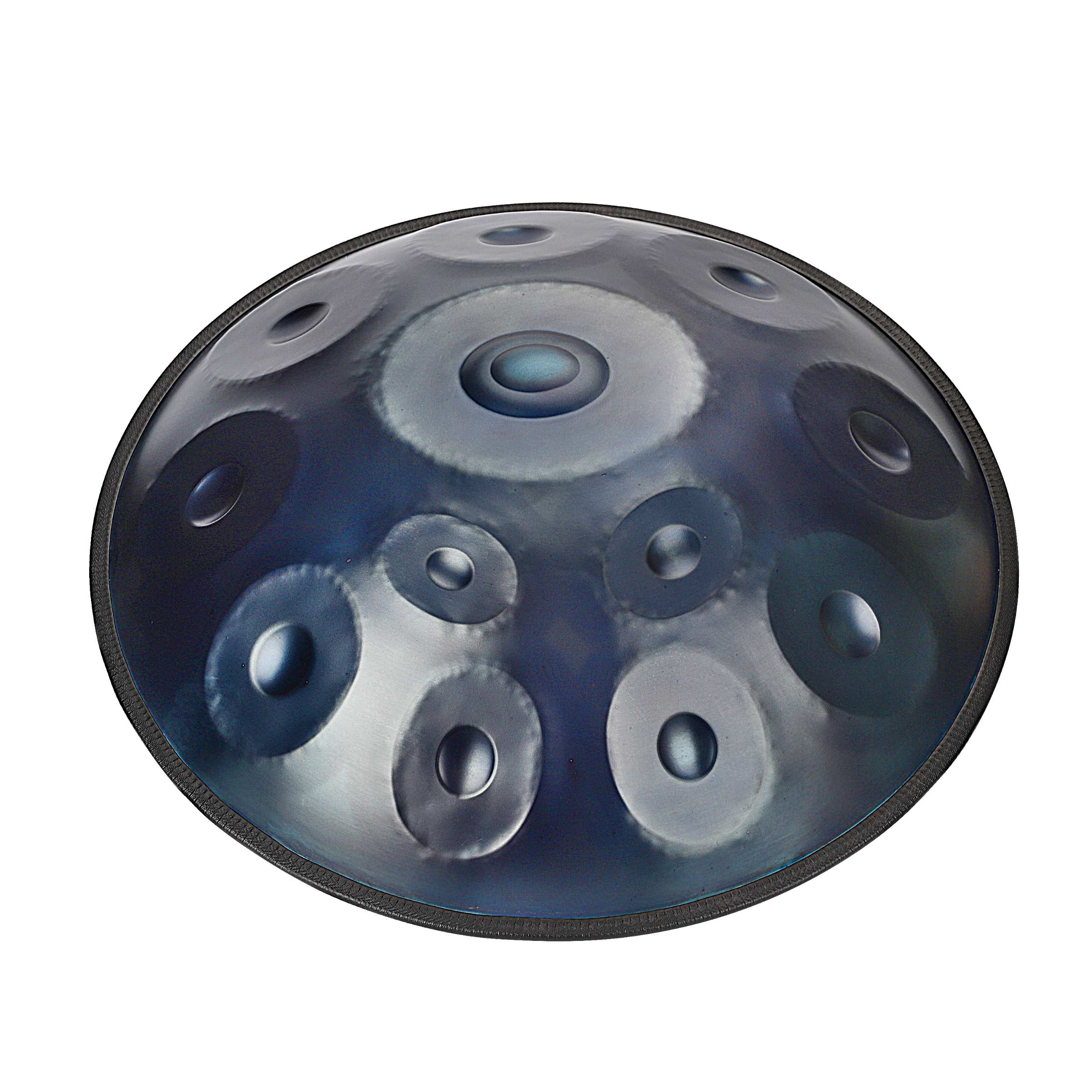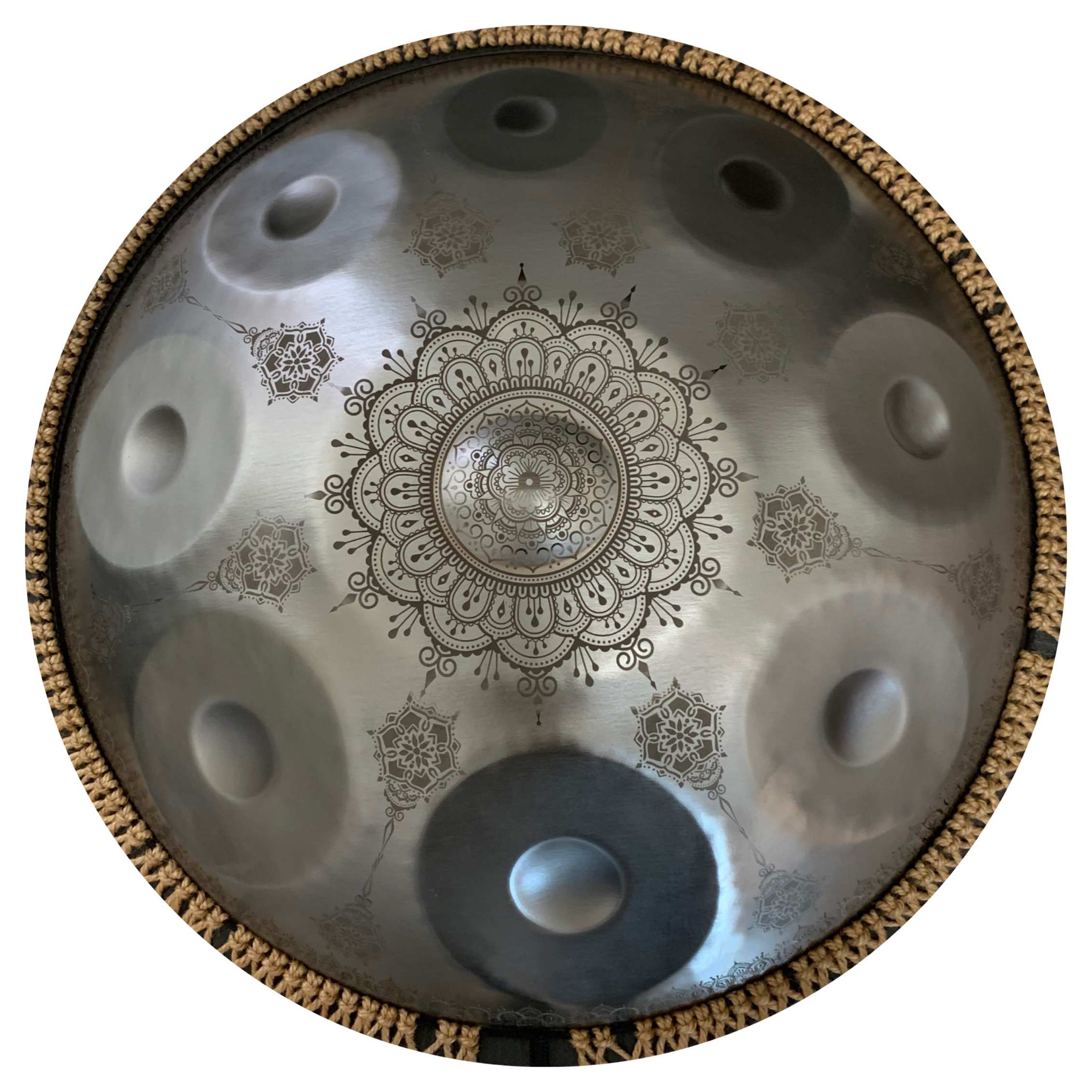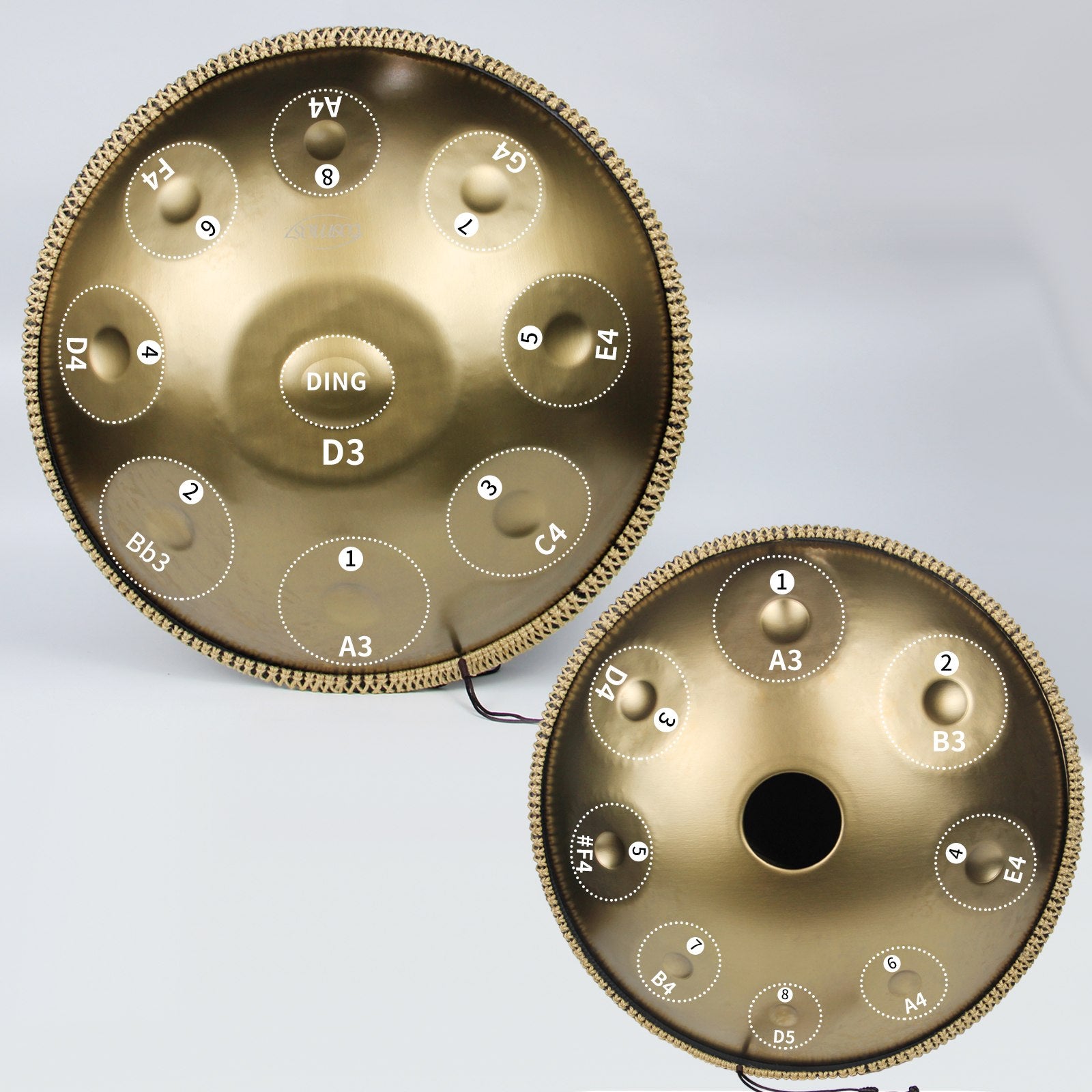Unlock the full potential of your handpan drum with expert tips on technique, scale selection, maintenance, and more in this comprehensive guide.

The handpan is a unique drumming instrument that has gained popularity recently due to its unusual sound and adaptability. Handpans originated from the Trinidad Steel Pan. Initially manufactured by a single business in Switzerland, there are now over 100 handpan companies worldwide.
The handpan is often compared to a steel drum, although it produces a more mellow and melodious sound. It is played by striking the dome-shaped surface with your hands, which produces a rich and nuanced sound.
In this article, we’ll look at 10 tips to make the mst of your handpan drum and enhance your handpan skills. These tips will help you hone your technique, broaden your musical vocabulary, and gain a better grasp of the handpan.
1. Choose a Quality Handpan
Before buying a handpan, conduct proper research. visit festivals, ask handpan friends, post a call on forums for local players, and/or contact renowned makers to schedule a visit. A decent handpan, even for beginners, should be easier to play and understand. The seven main characteristics of a good handpan are:
- Tuning: The accuracy and consistency of the notes across the handpan.
- Timbre: The unique tonal quality and richness of the instrument.
- Sustain: How long the sound resonates after each strike.
- Balance: The evenness and coherence of sound between different notes.
- No Crosstalk: Minimal interference or unintended resonance between adjacent notes.
- Dynamic Range: The ability of the handpan to produce a wide range of volumes and intensities.
- Harmonic Precision: The clarity and purity of harmonic overtones the instrument produces.
Take your time, enjoy it, and investigate it while considering all attributes.
2. Choose the Right Handpan Scale
When beginning your adventure with the handpan drum, choosing the proper scale is critical to your enjoyment and creative expression. Begin by exploring numerous handpan scales on venues such as YouTube, where you may listen to several alternatives and take notes on which ones resonate with you. Consider each scale’s features— minor, major, serious, sharp, mellow, or upbeat—and their ability to support your musical aims, whether jamming, writing, relaxing, or improving your present setup. To successfully communicate your preferences to handpan makers, list your favorite scales containing particular characteristics like names and musical notes.
Researching and contacting manufacturers about scale availability is critical, as not all manufacturers produce every scale. Be prepared to select from available possibilities or look into alternative manufacturers specializing in your selected scale. Take your time making decisions to ensure they are in line with your musical aims and preferences. By following these procedures, you can confidently choose a handpan scale that satisfies your musical requirements and connects strongly with your artistic vision and style.
3. Check out Videos
To refine your ear for handpan music, start by searching “handpan” on YouTube and listen to various videos. Use headphones for better clarity in picking up nuances like tone, sustain, tuning, note balance, and dynamics. Take note of the differences between instruments you hear.
As you tune into listening, you’ll identify instruments that resonate with you. Watching more videos will train you to distinguish between high-quality sounds and those resembling saucepans. Remember that views and likes can sometimes indicate instrument quality, but popular videos may also feature gimmicks like unusual playing techniques.
4. Understand The Handpan
Before proceeding with the techniques, you must first gain a basic understanding of the handpan. It has a convex steel drum with many tone fields and a ding-like center note. The instrument is played by touching the different tone sections with your palms and fingers. Each tone field produces a coherent and musical sound with its own characteristic pitch. Familiarize yourself with the design and tones of the handpan to form a stronger bond with it.
5. Master Rhythmic Patterns
Every musical composition is based on rhythm, and the handpan is no exception. Begin with practicing basic four- and six-beat rhythms and additional simple rhythm patterns. A metronome can help you improve your timekeeping and precision. As you go, challenge yourself with more difficult patterns, syncopations, and polyrhythms. Try varying tempos and accents in your handpan compositions to add depth and intricacy.
6. Explore Melodic Diversity on the Handpan
While rhythm is vital, the handpan also provides various melodic options. Experiment with various scales and modes to create intriguing melodies. Begin by learning the pentatonic scale, often used in handpan music. As you acquire confidence, experiment with more exotic scales such as the Dorian, Phrygian, and Mixolydian. Combine melodic sequences and rhythmic patterns to produce complex and expressive musical phrases.
7. Cleanliness is Key
All stage musicians who take good care of their instruments clean them down with a cloth before storing them. Steel is a porous material that absorbs everything on it. Fingers and hands are frequently greasy from body oils, filthy, and have the unfortunate habit of leaving dead cells behind. The filth has accumulated on your handpan, which is not ideal. Keeping a microfibre cloth in the bag is always best for cleaning the surface after each playing session. Get in the habit and discipline of doing so.
8. Playing in Humid Places
Playing your handpan on the beach during the magical hours of sunrise or dusk can be incredibly inspiring. The soothing sound of waves and the warmth of a summer breeze create an ideal setting for musical creativity. However, there are important considerations to keep in mind.
The high humidity and salt exposure near the sea can harm your handpan. Salt, notorious for causing corrosion, can damage the instrument over time if not properly managed. After playing, it's crucial to wipe down your handpan to remove any moisture and keep it protected from salty air by keeping it securely stored in its case.
Additionally, playing on the beach often attracts attention from passersby, who are curious about the unique sound of the handpan. While engaging in conversations can be enjoyable, it’s essential to never leave your instrument unattended, especially during vulnerable times like dusk or early morning. Securing your handpan in its case when not in use ensures its safety and longevity, allowing you to enjoy your beachside musical sessions without worry.
9. Proper Hand Placement and Posture
You must develop proper hand placement and posture to play the handpan efficiently. The handpan is played with the hands, and proper technique is needed to produce a clear and constant sound. The hands should be positioned on the instrument in a relaxed and natural position, with the fingers curved and palms facing downward. The posture should be erect and relaxed, with the shoulders, arms, and back straight. Proper hand placement and posture allow you to play the handpan more comfortably and efficiently.
10. Practice Regularly
Lastly, regular practice is vital for learning the handpan since it improves technique, time, and overall musicality. By continuously practicing, you will gain a deeper understanding of the instrument and its possibilities, allowing you to experiment with new approaches and styles. Furthermore, frequent practice promotes muscle memory, making playing complex patterns and rhythms simpler.
Conclusion
To excel at playing the handpan, you must have the patience, dedication, and curiosity to uncover the instrument’s distinct characteristics. Mastering hand placement, rhythm, melody, and dynamics is crucial for developing a personal style and crafting compelling music. Remember to practice often, try new methods, and take inspiration from skilled handpan players. With time and work, you will realize the full potential of this wonderful instrument and captivate audiences with your handpan music.

